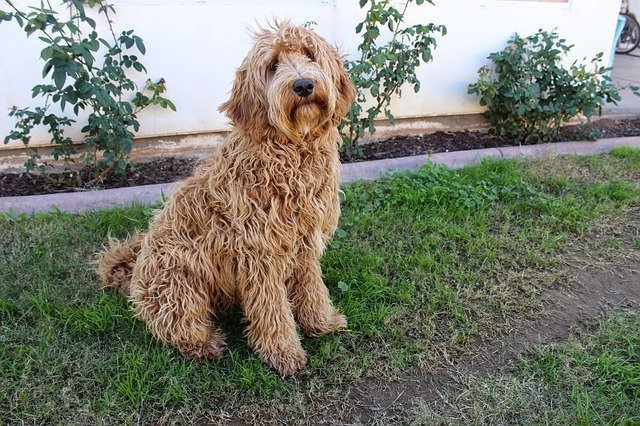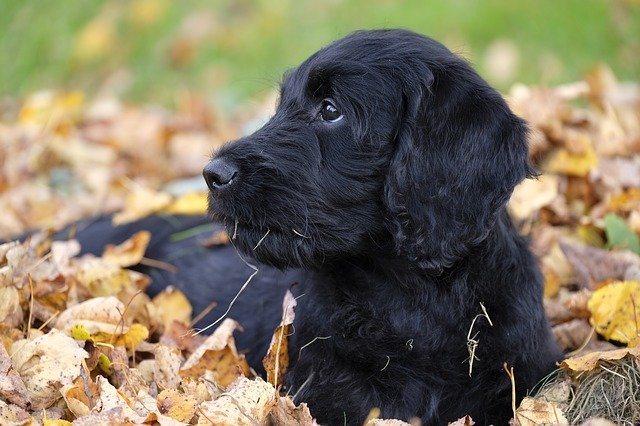There is a large section of Americans who suffer from dog allergies. To assure no chances of having a medical emergency, it is advised to find out just how hypoallergenic a dog is before you adopt a dog.
Yes, Labradoodles are considered close to Hypoallergenic for their low shedding coat. They don’t drool as well and hence are considered suitable for allergy-prone people.
How close is the Labradoodle to being hypoallergenic?
Hypoallergenic is usually a term used by breeders who are trying to sell off their dogs. Several features give the Labradoodle a ‘hypoallergenic’ tagline. These facts include:
- The Labradoodle sheds fewer hairs with the traits of the poodle. Though the degree of shedding would depend on which parent breed is more dominant. If it is a labrador, they may shed relatively more (Still not heavy shedders) and if it is a poodle, they will shed less.
- Saliva is not a problem as the Labradoodle does not drool like other larger dogs
If you are looking for a smaller dog that is almost hypoallergenic, you can consider the Maltese.
Labradoodle generation influences hypoallergenic characteristics
Various generations of Labradoodles bear different shedding traits that influence hypoallergenic nature of the dog.
Labradoodle (first generation)
This generation of Labradoodle is created by crossing a Labrador Retriever and a Poodle. Both must be pure bred individuals with distinct traits.
The Poodle used could be of either type, standard or toy. This Poodle is then crossed with a Labrador Retriever. The resultant Labradoodle is not guaranteed to be hypoallergenic; this is because shedding tendencies of the Labrador may carry through.
Labradoodle (second generation)
In this case, a first-generation Labradoodle (F1B) is crossed with a Poodle. If this Poodle bears a non-shedding fleece coat, it is likely the offspring (second generation Labradoodle) will be better matched for allergy-prone people.
This hybrid Labradoodle will have a wool or fleece coat which greatly reduces shedding. Still, this does not guarantee that there will not be allergies being caused.
Labradoodle (third generation)
When you breed a first-generation Labradoodle to a second-generation Labradoodle or a Poodle, you will get a third-generation Labradoodle. Assuming the parents of these two dogs are non-shedding, it is likely that this generation will also bear a non-shedding coat.
As breeding continues, the later generations receive a recessive gene that stops shedding. This is why later generations other than a first-generation Labradoodle are desirable for people who do not want any shedding and dander in the house.
This makes it clear that the Labradoodle generation does play a role in coat and shedding traits. In turn, this affects the suitability of the dog for people with allergies related to hair and dander.

What causes dog allergies?
It is not possible for the Labradoodle or any other dog to be 100% hypoallergenic. The reason for this being all dogs shed as part of their natural hair growth cycle.
Labradoodle does not shed as furiously as other long-haired dog breeds. This shedding releases something called dander which can cause allergic reactions in humans.
Dander is nothing but an accumulation of dried skin cells. These cells can trigger a high immune response in some people causing allergy.
Additionally, every substance and fluid created by the dog has allergens. Allergens exist in dog saliva and urine. These particles are expected to be everywhere around the house once you adopt a dog.
How to limit allergic reactions from a Labradoodle?
Dog allergies are a common condition experienced by many Americans. While these allergenic substances are commonly present in any dog, it is limited but not absent in the Labradoodle.
To assure that you do not suffer from Labradoodle allergies, being exposed to a Labradoodle at a young age can help to produce vital antibodies. Someone not exposed to any animal could be at greater risk of allergies.
Dog allergens might become a common part of your home. Here are ways to remove them.
- Wash linen often
Dogs have a tendency of jumping on the sofa, bed, or car seat. Using linen coverings can protect the underlying soft furniture. Washing this linen often can help to create a hair and dander-free living area.
- Vacuum the carpet
A vacuum cleaner will be your best friend to remove Labradoodle hair and bits of grass and dirt that he brings into the house. This also removes dust from the floor.
A hand-held vacuum cleaner can be used for the sofa, curtains, and bed. Overall, it is a good investment for any pet owner.
- Use air filters
HEPA air filters eliminate a high level of allergens from the air. This includes dander and hair that could be suspended in the air.
Labradoodle coat types
The Labradoodle comes in many coat variants depending on the parents.
Since the coats vary, the degree of allergies or extent of hypoallergenic properties also varies depending on the coat. Generally, there are three main coats that can appear on a Labradoodle.
These coats are based upon their appearance. Here are the three coat types:
Hair- The coat varies in physical appearance; it could be wavy or curly. They can shed moderately and are not the most appropriate for people with compromised immune systems and allergies.
Wool- Appearing as wool, this coat resembles that of a Poodle. Considered allergen-free, this coat requires a lot of grooming. They are good for allergy-prone folks but it could be difficult to maintain their coat.
Fleece- Requiring minimal maintenance, fleece coats are the best as they do not shed as well. This makes them the most selected variant for people who suffer from allergies and asthma. People with health conditions can adopt this dog.
Is a Poodle hypoallergenic
As stated before, a truly hypoallergenic dog does not exist. The Poodle is one dog breed that comes very close. Bearing an almost non-shedding single coat, dander is not a cause of concern with this pretty pooch!
Dog allergies mostly arise from dander. Every Poodle has a single coat that is not known to visibly shed.
Luckily, the Labradoodle inherits this coat and the properties that come with it.
Are Labradors hypoallergenic?
Unfortunately, excellent hypoallergenic characters are not passed on by this parent, the Labrador Retriever. Labradors tend to shed a lot, especially when compared to the Poodle.
Increased shedding means that the amount of dander released is high. This could be down to the fact that the Lab has a much different hair coat compared to the Poodle.
Conclusion
The Labradoodle is loved for its attractive looks. They are loving, active, and relatively easy to train. When they have a wool or fleece coat, they are non-shedding.
Therefore, people state them as a good dog for people with dog-related allergies.
Check who you want to Choose – Goldendoodle vs Labradoodle

